The Battle of Kadesh: A Conflict Between The Empires, Causes, Outcomes& Peace Treaty
Between 1886 and 1897 BCE, the Kadesh battle took place in the Eastern Mediterranean. The conflict saw two superpowers battling it out-Central Egypt under the aegis of Pharaoh Ramesses II and the Hittite Empire under King Muwatalli II. The two armies met in opposite locations at the River Orontes, surveying upstream from Lake Homs, along the powerful Lebanon-Syria borders adjacent to ancient medieval towns named Kadesh.
It is the earliest battle in history for which people knew details of tactics and formations. It is the largest battle ever involving chariots. Because the number was between 5,000 and 6,000. Ramesses II personally led a charge through the Hittite ranks with his bodyguard after being outmaneuvered, ambushed, and surrounded. They broke through and avoided the capture or death of the pharaoh. Here’s a background about this battle.
Background: Egypt and The Hittites before Kadesh
After expelling the Hyksos’ 15th Dynasty around 1550 BC, the rulers of the New Kingdom of Egypt became more aggressive in reclaiming control of their state’s borders. Thutmose I, Thutmose III, and his son and coregent Amenhotep II fought battles from Megiddo north to the Orontes, including conflict with Kadesh. During the reigns of Thutmose IV and Amenhotep III, Egypt continued to lose territory to the Mitanni in northern Syria.
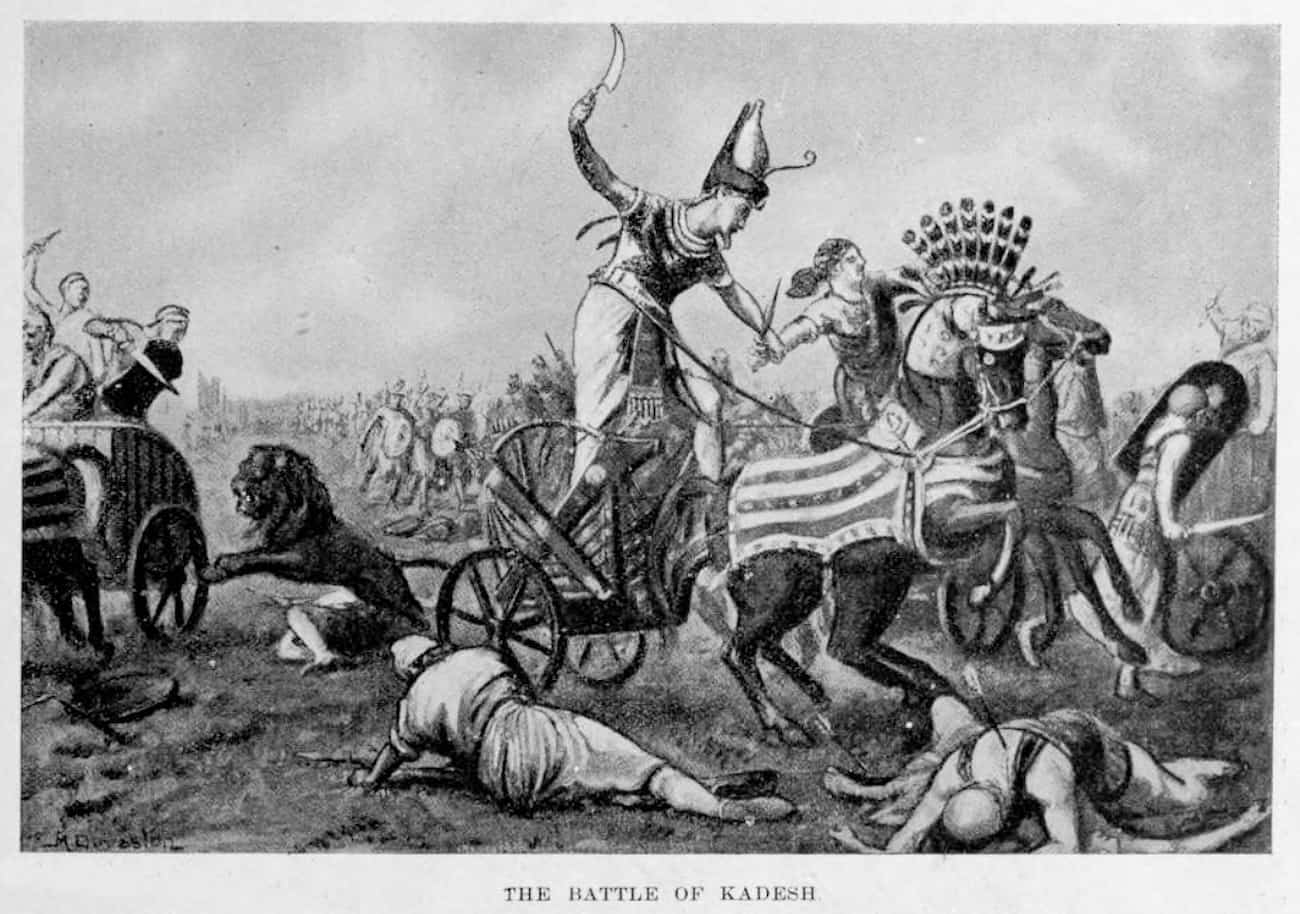
Battle of Kadesh
During the late Eighteenth Dynasty, the Amarna letters tell the story of the decline of Egyptian influence in the region. The Egyptians showed little interest in this region until almost the end of the dynasty. Horemheb was the last ruler of this dynasty, campaigned in this region. He finally began to turn Egyptian interest back to the area.
The Egyptian New Kingdom (1550–1070 BCE) was a period of prosperity, expansion, and military strength. Pharaohs such as Thutmose III and Amenhotep II had campaigned far into Asia. That ensured Egyptian dominance. By the period of Ramesses II‘s reign, a substantial portion of this territory had come under attack due to Hittite conquest. The Hittites had successfully pushed southward and took control of key cities such as Kadesh and Amurru. These cities were important not only for trade and tribute but also for controlling strategic routes that connected Mesopotamia, Anatolia, and Egypt.
The Hittites had a powerful and ambitious Empire under King Muwatalli II. Known to the world for some of the best chariot forces of their age and in organizing very large armies, the Hittites looked upon Egyptian efforts to reclaim Kadesh as direct encroachments upon their sphere of influence. Therefore, sometime by the middle of the 13th century BCE, the clash between the two powers became irrefutable.
Contending forces at Kadesh Battle
Ramesses led an army of four divisions: Amun, Re (pRe), Set, and the apparently newly-formed Ptah division.
There was also a poorly troop, the NRRN (Ne’arin or Nearin). They were possibly Canaanite military mercenaries or Egyptians that Ramesses II had left in Amurru to secure the port of Sumur. This division would play a critical role in the battle.
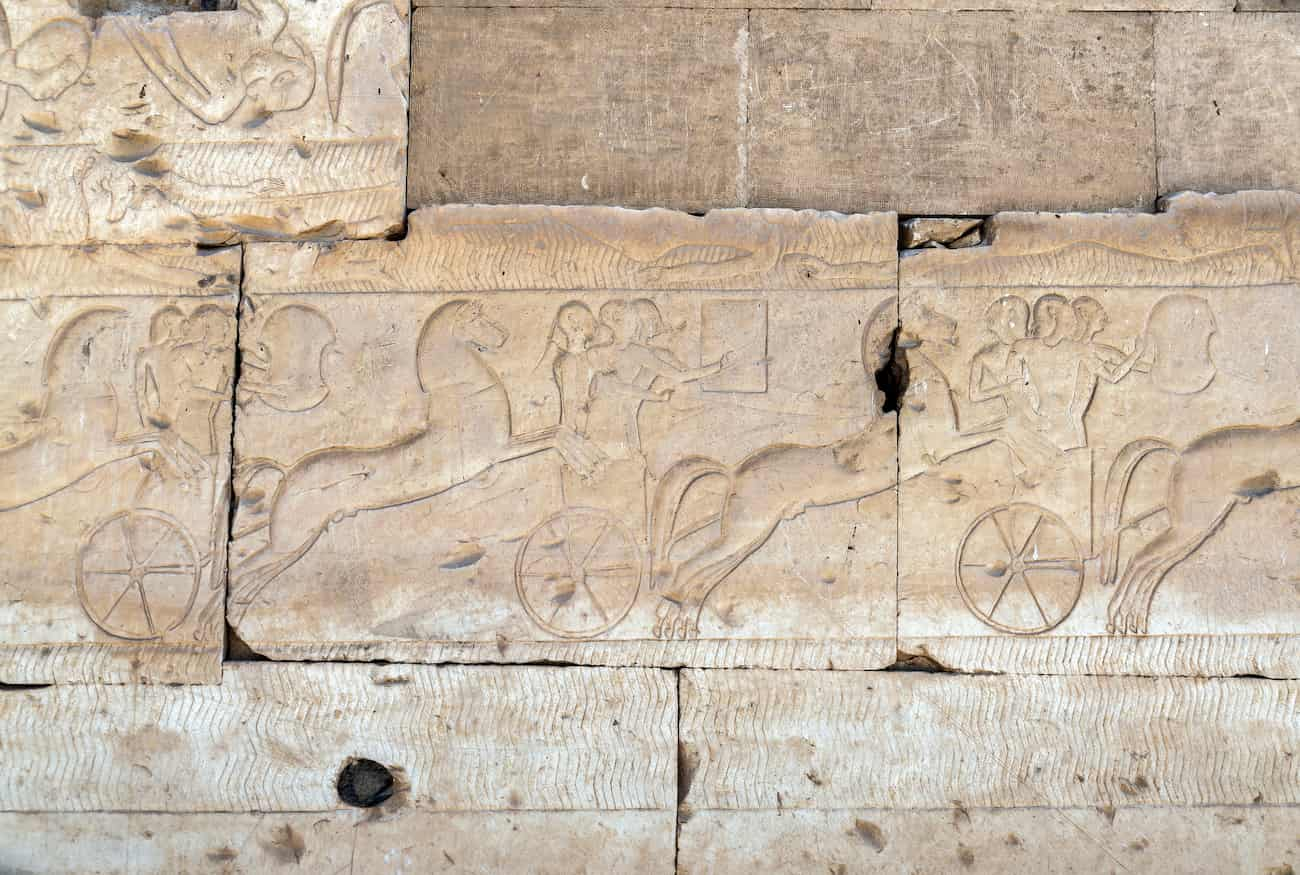
Temple-of-RamsesII-at-Abydos-Kadesh-battle
Also, the presence of Sherden troops fighting for the Egyptian army was very important. This is the first record of them as Egyptian mercenaries. They would play an increasingly significant role in Late Bronze Age history. Then they appeared lately among the Sea Peoples that ravaged the eastern Mediterranean at the end of the Bronze Age.
On the Hittite side, King Muwatalli II had mustered several of his allies, among them Rimisharrinaa, the king of Aleppo. Ramesses II recorded a long list of 19 Hittite allies that Muwatalli brought to Kadesh. This list is of considerable interest to Hittitologists, as it reflects the extent of Hittite influence at the time.
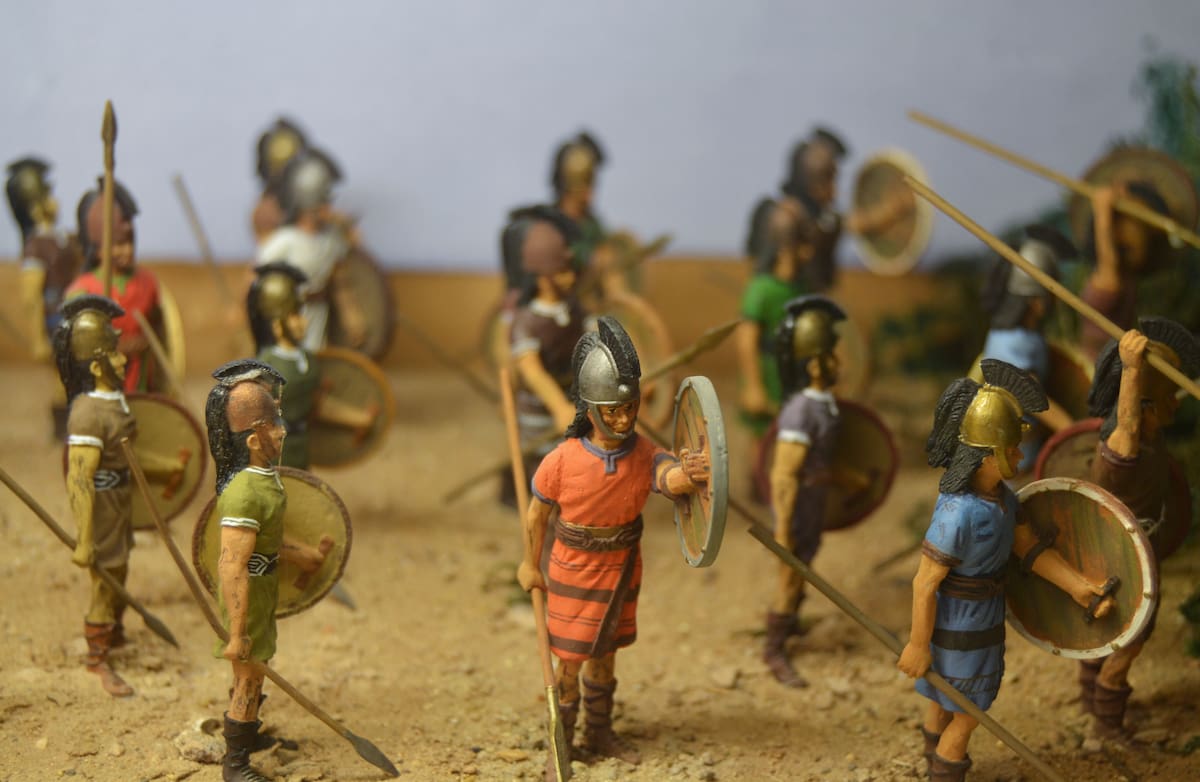
Exploradors hittites,kadesh battle
What are The Causes of The Battle of Kadesh?
The clash at Kadesh took place as a result of the Hittites and Egyptians competing for influence in Canaan. Canaan was a highly important location for ancient Egypt due to regional interests and security. As a response to the successful expulsion of the Hyksos, a native Egyptian dynasty in 1550 BCE, the New Kingdom Pharaohs campaigned in Canaan much more harshly.
They sought to reclaim their lost spheres of influence and create a buffer zone that would prevent invaders from reaching Egypt itself. Egypt came into conflict by pushing its borders with other powerful kingdoms like the Mitanni and the Old Assyrians. In response, the Egyptians tried to further expand their buffer zone until they came into direct contact with the Hittites.
The Hittite kingdom relied on several trade routes running through Syria and Canaan for the economic security of its empire. Trade with Mesopotamia was crucial as this was a major market for Hittite goods. These trade routes allowed the Hittites to maintain contact with their allies and wage war against their enemies. Egyptian campaigns in the region, during which the Egyptians established new garrisons, strengthened existing ones, and subdued the Amurru kingdom, a Hittite vassal, threatening the Hittite Empire’s stability. When the Hittite army marched south, its stated goal was to recapture Amurru.
Battle of Kadesh 1274 BCE: Ancient Egypt vs the Hittites
Muwatalli had positioned his troops behind “Old Kadesh”. Ramesses II was misled by two captured nomads who said the Hittite army was still far off at Aleppo. The nomads were Hittite spies to mislead the pharaoh. Ramesses ordered his forces to set up camp. He marched hastily towards Kadesh, unaware of the large enemy force waiting for him. Ramesses II describes his arrival on the battlefield in the two principal inscriptions concerning the battle, the so-called “Poem” and the “Bulletin”.
After this, Ramesses II called his princes to meet with him and discuss the fault of his governors and officials in not informing the position of Muwatalli II and the Hittite army. Ramesses was alone with his bodyguard and the Amun division. The vizier was ordered to hasten the arrival of the Ptah and Seth divisions. The Ra division had almost arrived at the camp.
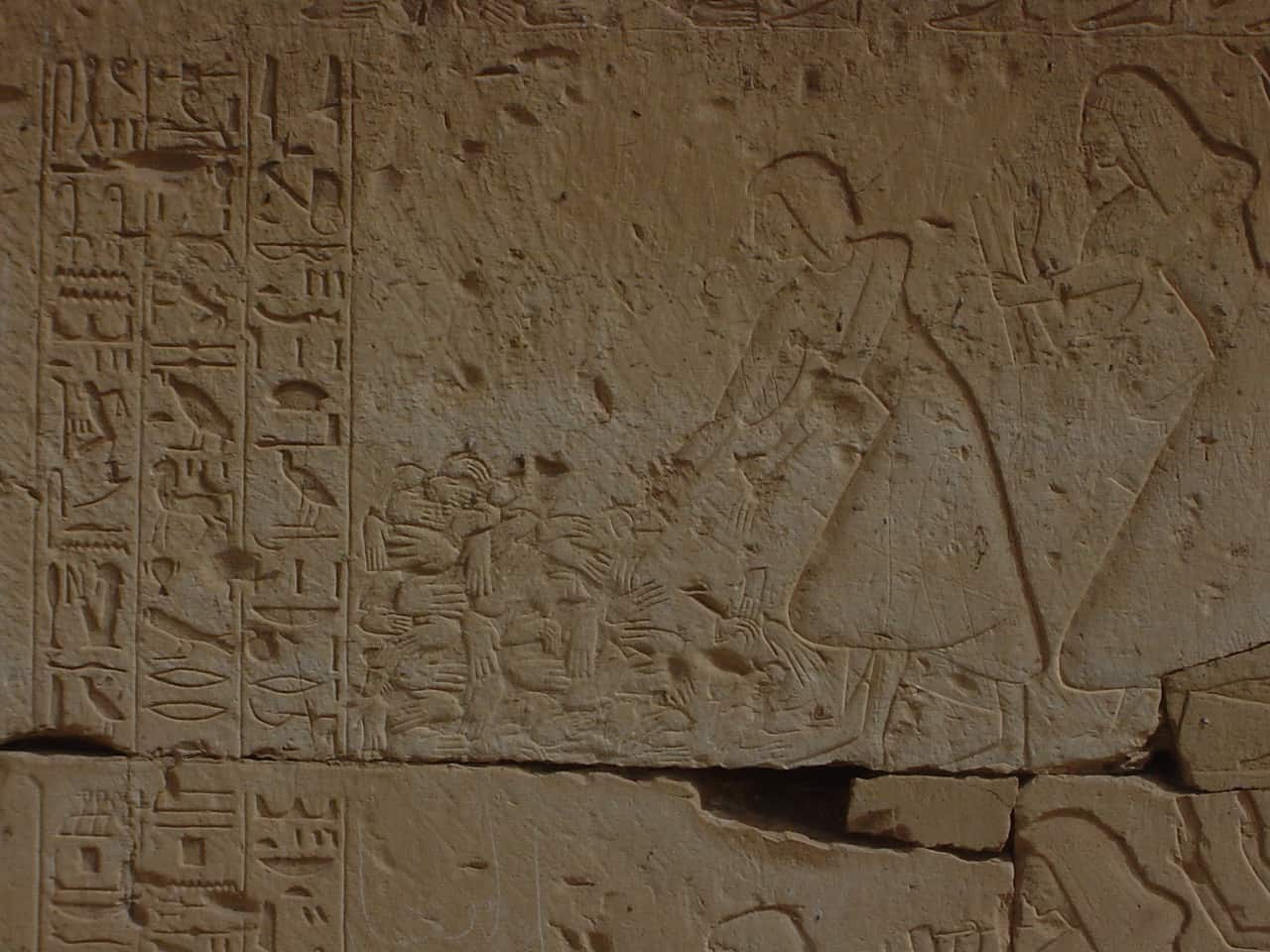
Kadesh_counting_of_hands
While Ramesses II was talking with the princes and ordering the Amun division to prepare for battle, the Hittite chariots crossed the river and charged the middle of the Ra division as they were making their way toward Ramesses II’s position. The Ra division was caught in the open and scattered in all directions. Some escaped northward to the Amun camp, all the while Hittite chariots pursued them.
The Hittite chariotry rounded north and attacked the Egyptian camp through the Amun shield wall. So this caused panic among the Amun division.
Ramesses counterattacks
There were obstacles in the large Egyptian camp during the crash. Ramesses describes himself as enemies deserted and surrounded him: “No officer was with me, no charioteer, no soldier of the army, no shield-bearer. Ramesses II was able to defeat the initial attackers and return to the Egyptian lines. I found the mass of chariots in whose midst I was, scattering them before my horses.
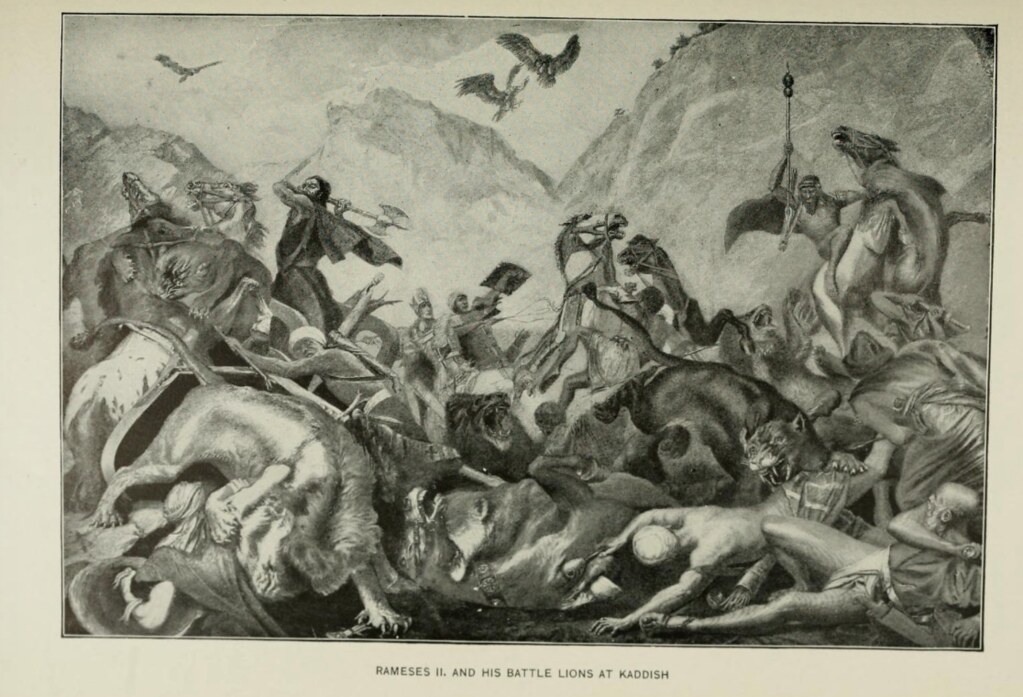
Ramses II attacks the Hattites
The pharaoh, forced into a desperate fight for his life, called upon his god Amun and faced the enemy. Ramesses II personally led several charges into the Hittite ranks along with his personal guard, some chariots from his Amun division, and survivors from the routed Re division.
The Hittites, believing their enemies to be routed, stopped to plunder the Egyptian camp. An Egyptian counterattack subsequently drove them back towards the Orontes River and away from the camp. In the ensuing pursuit, lighter Egyptian chariots overtook and dispatched Hittite chariots.
Final phase of the battle
After Muwatalli II suffered this significant reversal in the battle, he still commanded a large force of reserve chariotry and infantry, as well as the walls of the town. As the retreat reached the river, he ordered another thousand chariots to counter-attack, under high nobles close to the king. As the Hittite forces approached the same Egyptian camp again, the Ne’arin troop contingent from Amurru suddenly arrived, surprising the Hittites. Finally, the Ptah division arrived from the south, threatening the Hittite rear.
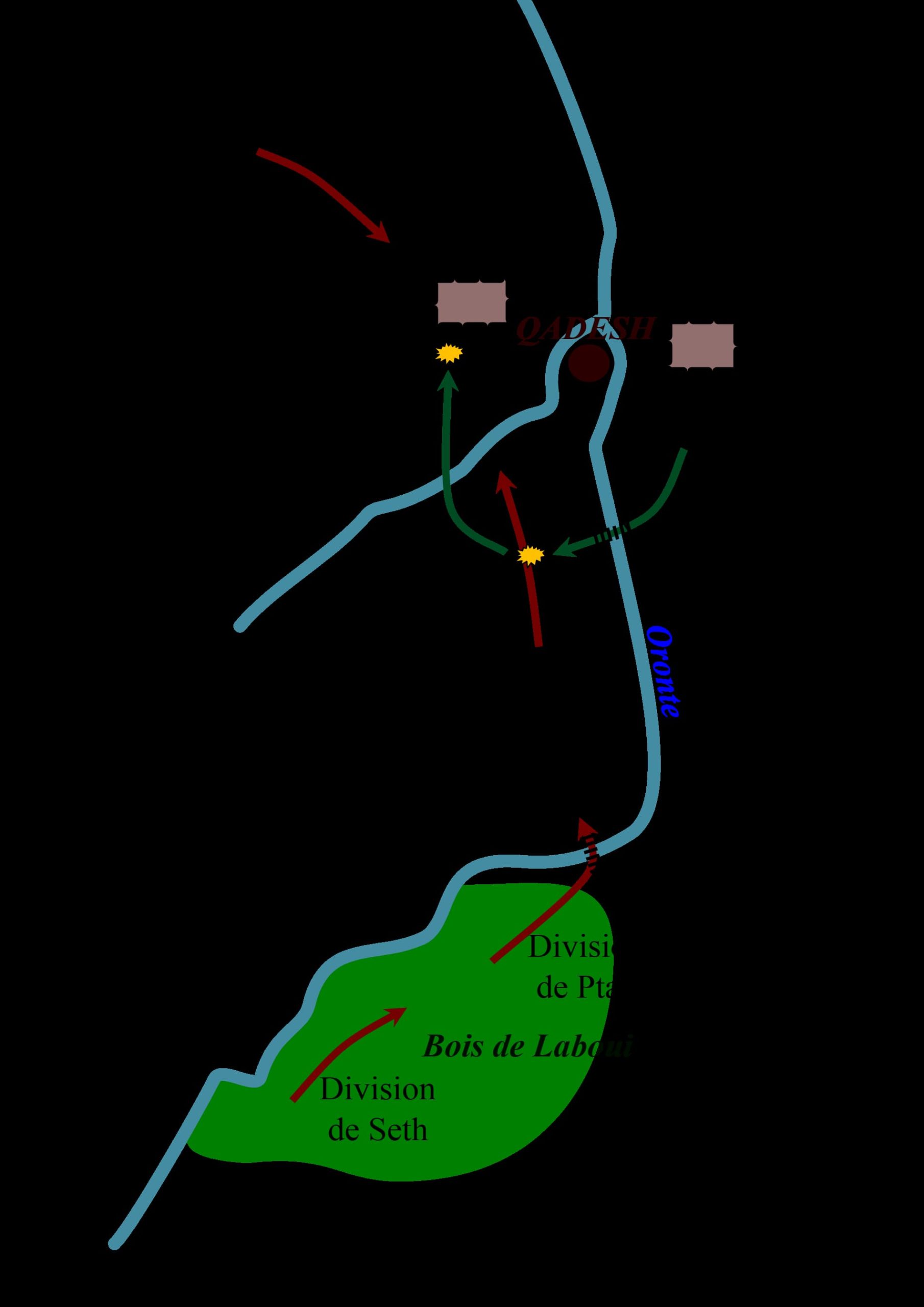
Kadesh Battle, the last phase
After six unsuccessful Hittite charges, their forces were almost surrounded, and the survivors were pinned against the Orontes. The remaining Hittite element abandoned their chariots and attempted to swim the river “as fast as crocodiles”. Many drowned. After the battle, the Hittites were routed, but they held on to Kadesh.
Aftermath of the Kadesh Battle
Ramesses was unable to support a long siege of the walled city of Kadesh. He gathered his troops and headed south towards Damascus and ultimately back to Egypt. Ramesses proclaimed he had routed his enemies and that he had not attempted to capture Kadesh. The battle was a personal triumph for Ramesses. After moving into the ambush, facing defeat and death, the king managed to rally his scattered troops and save the day. The following day, the Egyptians and Hittites faced off directly, in a battle that resulted in a stalemate.
Hittite records from Hattusa tell a different conclusion to the conflict, in which Ramesses was forced to depart from Kadesh in defeat. Modern historians conclude that the battle ended in a draw from a practical point of view. It was a turning point for the Egyptians. They had developed new technologies and rearmed after years of territorial incursions by the Hittites. The Egyptian–Hittite peace treaty is the earliest example of a written international agreement.
The Hittite king, Muwatalli II
The Hittite king, Muwatalli II, continued to campaign as far south as the Egyptian province of Upi (Apa). He captured this province and placed it under the control of his brother Hattusili, the future Hattusili III. Egypt’s sphere of influence in Asia was now restricted to Canaan, but revolts among Egypt’s vassal states in the Levant threatened the region for a time. Ramesses had to embark on a series of campaigns to uphold his authority in Canaan before he could again attack the Hittites.
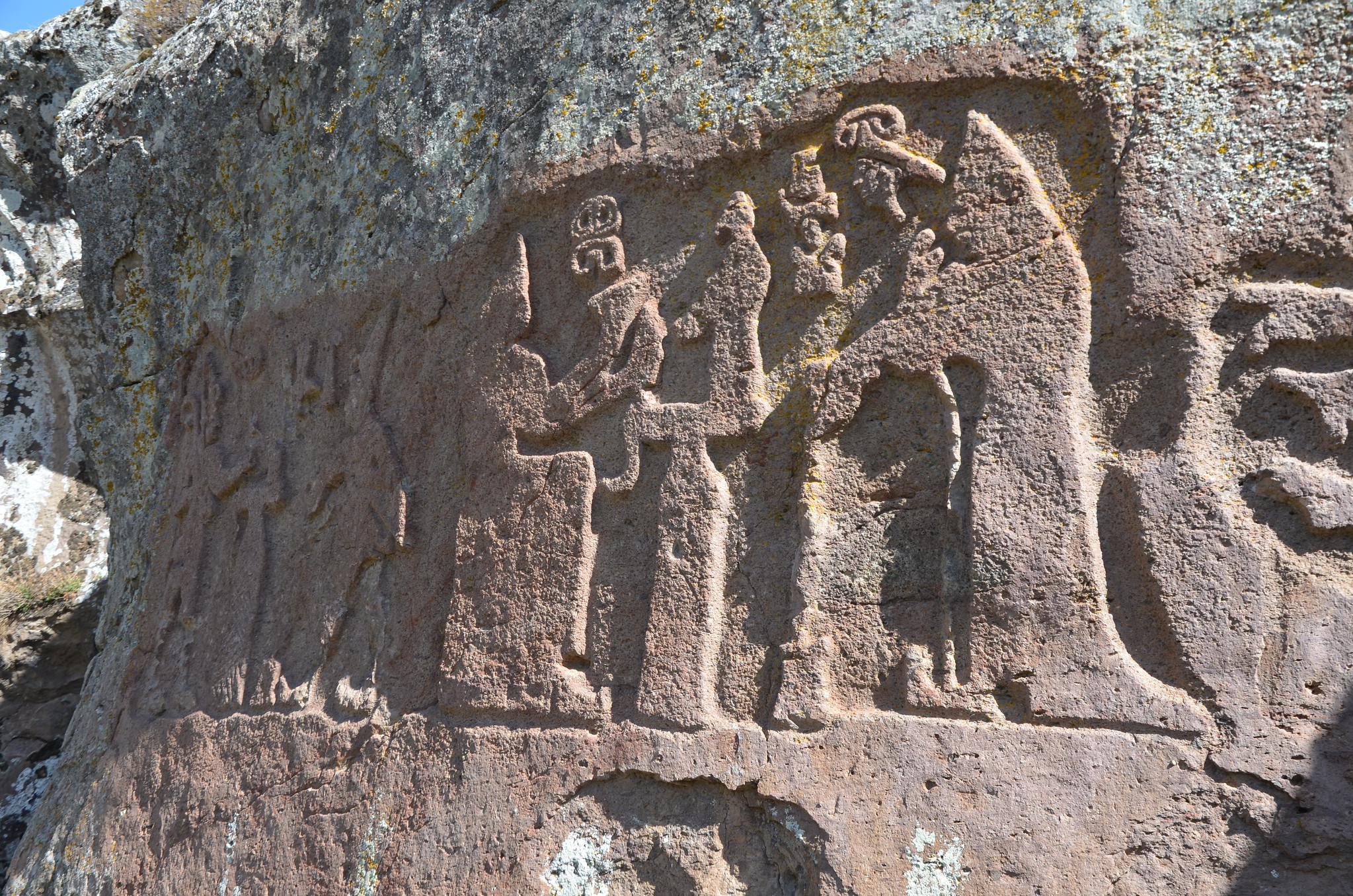
Hittite rock relief
In the eighth and ninth years of his reign, Ramesses extended his military successes. This time, he successfully captured the Hittite-ruled cities of Dapur and Tunip, where no Egyptian soldier had existed since the time of Thutmose III almost 120 years earlier.
Who Won the Battle?
Both sides claimed victory, neither achieved a decisive triumph, and the battle ultimately led to a peace treaty. Ramesses’s victory proved ephemeral. The thin strip of territory pinched between Amurru and Kadesh was not a defensible possession. Within a year, it had returned to Hittite control. Ramesses had to march against Dapur once more in his tenth year. Neither Egypt nor Hatti could decisively defeat the other in the region.
The Egyptian-Hittite Peace Treaty
An official peace treaty with the new Hittite king Hattusili III was some 15 years after the Battle of Kadesh, in the 21st year of Ramesses II’s reign (1258 BC). This concluded the borderland conflicts. The treaty was on a silver tablet, of which a clay copy was in the Hittite capital Hattusa, now in Turkey, and is on display at the Istanbul Archaeology Museum. A large replica hangs on a wall at the headquarters of the United Nations, as the earliest international peace treaty known to historians. Its text, in the Hittite version, appears in the links below. An Egyptian version survives on papyrus.
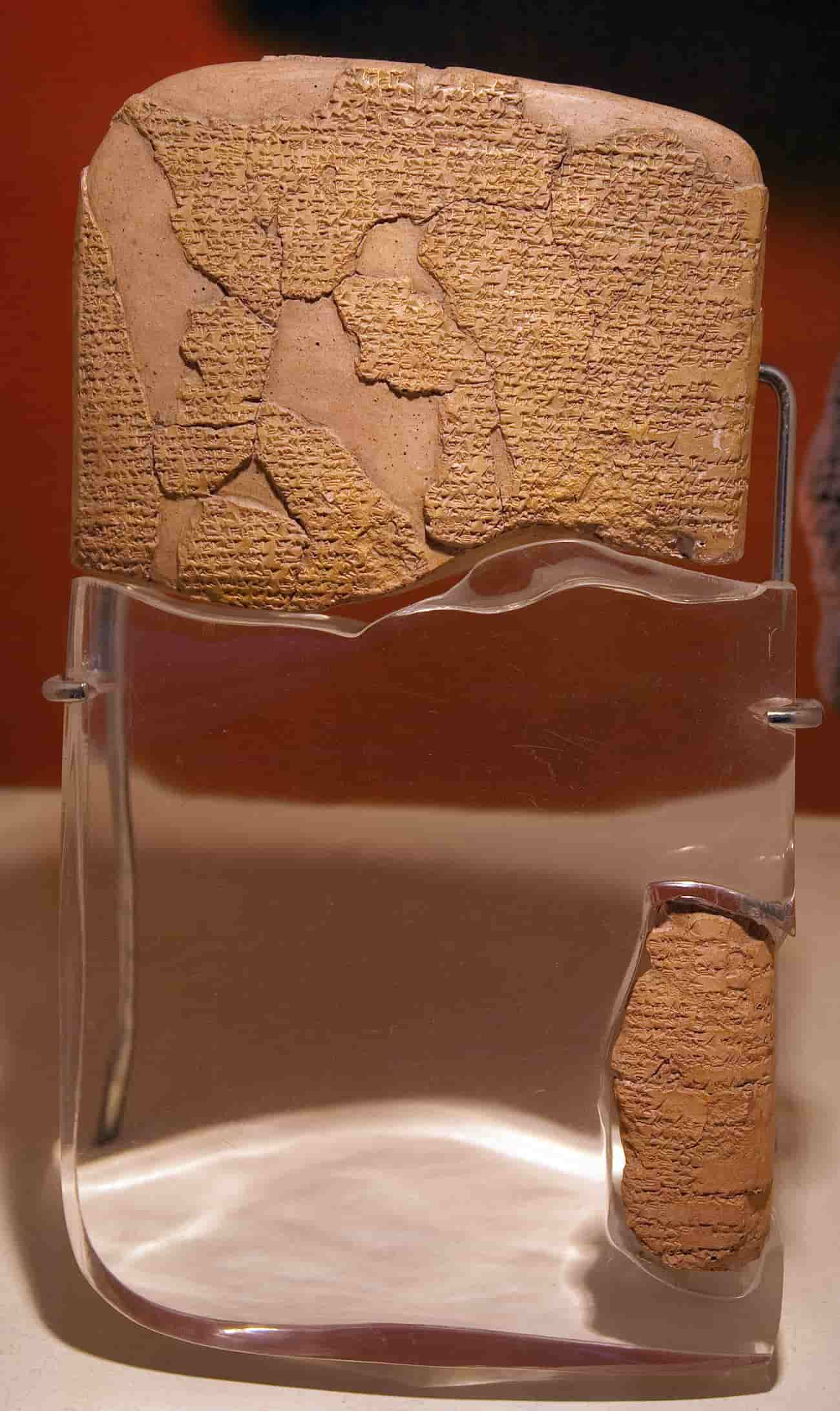
The treaty of Kadesh battle
Trevor Bryce states that both sides claimed victory. Ramesses got the upper hand at the end of Kadesh, but he failed to retake Amurru and Qadesh, which the dispute was about. Essentially describing an Egyptian tactical victory at Kadesh’s battlefield by preventing the Hittites from defeating the Egyptians, but a Hittite Strategic victory as it kept control over the disputed territory.
Conclusion
The Battle of Kadesh was one of the largest chariot battles in history, between the forces of Pharaoh Ramses II of Egypt and the Hittite Empire. It fought around 1274 BCE. Ramses II claimed a great victory, although modern historians believe the battle ended in a stalemate.
Was the outcome certain?
When Hittite chariots attacked the Egyptian battalion’s camp, the Egyptians were not prepared and panicked at first. However, after a while, the army of the Pharaoh began the attack and repelled the attack. The outcome was not certain, but this battle certainly brought Ramses II’s reputation to its deserved climax as a military tactician, and it has been commemorated in many Egyptian temples and monuments.



